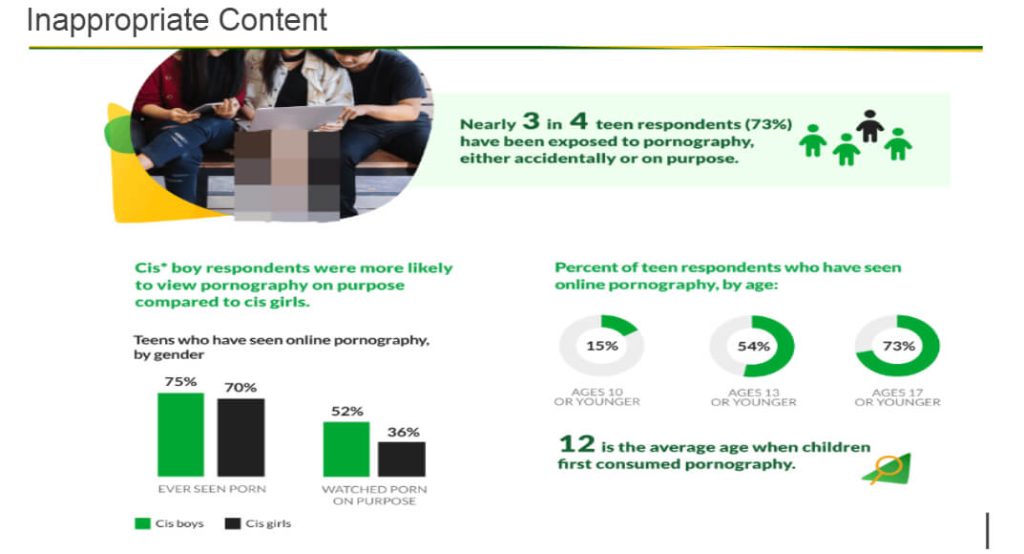With the limitless opportunities of learning, creativity and social connectivity this digital world offers, there are many risks and threats as well. These threats and risks affect the kids’ well – being pretty badly. As parents and caregivers, it is our responsibility to have enough knowledge and awareness required to protect our little ones from these online dangers effectively.
In this article, we mentioned some online risks and threats that every parent should know. It is important to stay vigilant especially when your child’s well being is at stake.
Common Online Threats and Risks
Cyberbullying
Cyberbullying is a prevalent online threat where individuals harass, threaten, or defame others using digital communication technologies. Behavior of children changes rapidly. They keep themselves away from social activities. They show unwillingness to use their digital devices are all indicators of cyberbullying.
Scamming and Phishing
Phishing stands out as one of the most widespread and damaging forms of cybercrime, a method that deceivers have employed for years. This malicious technique involves tricking individuals into divulging private information or unwittingly downloading malware.
It is crucial to educate your children about the importance of safeguarding their personal information online. Make them aware of the risks associated with clicking on suspicious links. Scammers can employ well-crafted emails, social media posts, or phone messages to deceive unsuspecting individuals. Unfortunately, when employees lack awareness and fail to recognize these scams, companies suffer significant data losses.
Statistics reveal that phishing constitutes the majority of cybercrimes. Studies show that a staggering 3.4 billion fraudulent emails are sent every day, underscoring the pervasive nature of this threat.
Inappropriate Content

According to research more than 50% teens or kids have been exposed to inappropriate content online. There is a wealth of material available on the internet, but not all of it is appropriate for kids. Explicit material, violent imagery, and hate speech all are inappropriate content. Filters and parental control software can help restrict access to such content.
Cyber predators
Online predators are individuals who exploit and manipulate young people using the internet. Moreover, they might act like peers to win over a child’s trust before engaging in harmful or illegal behavior.
Children must be informed about the risks of disclosing personal information online, and open discussion about their online activities should be encouraged.
Sexting
Sexting is the act of creating, exchanging, transmitting, or posting sexually explicit messages or photographs on the internet or a mobile device. The most popular type of sexting is sending, receiving, or disseminating a naked or semi-naked photo.
Sexting is prohibited under the age of 18 or when someone uses it to harass anyone. They are sex offenders if they harass someone with sexually inappropriate images, texts and conversation.
Your child has no control over where a nude they send will end up if they do so. Sexting victims may sustain significant psychological injury as well as lasting damages to their reputation.
Digital Footprinting
Children’s digital footprints are what they publish online, when they are online, and what they do online.
Sharing too much personal information online can bring problems. It includes invasion of privacy, the embarrassment of being the target of cyberbullying.
Therefore, it is essential for children to exercise caution in their online activities and to be aware of the traces they leave behind.
Malware
Malicious software, commonly known as malware, acts as an unwelcome intruder in your child’s online environment. It has the ability to infiltrate devices, causing harm by damaging files or pilfering sensitive information.
To safeguard our children’s digital experiences, installing reliable antivirus software on their mobile devices is crucial. Additionally, it is their responsibility to educate them about the importance of avoiding unfamiliar links and refraining from downloading unknown files.
Dependence on the Web
Internet addiction, from excessive use of the internet, leads to poor psychological and physiological outcomes.
Limit your children’s exposure to electronic media and promote a mix of online and offline pursuits. Encourage frank conversations about how to use the internet responsibly.
The Digital Anxiety
Excessive screen time and cyberbullying can all contribute to mental health concerns in youngsters, such as anxiety and sadness.
Monitor screen usage, encourage offline activities, and offer emotional support to your children for their general well-being.
Conclusion
In this digital age, it’s important for our kids’ safety that we know about the most common digital threats and risks they may face. Thus, as parents, it’s our job to teach our kids how to act responsibly online, keep the lines of communication open, and set limits to keep them safe from these digital risks.
We can make the internet a better place if we monitor our kids’ online activities and their digital involvement.





